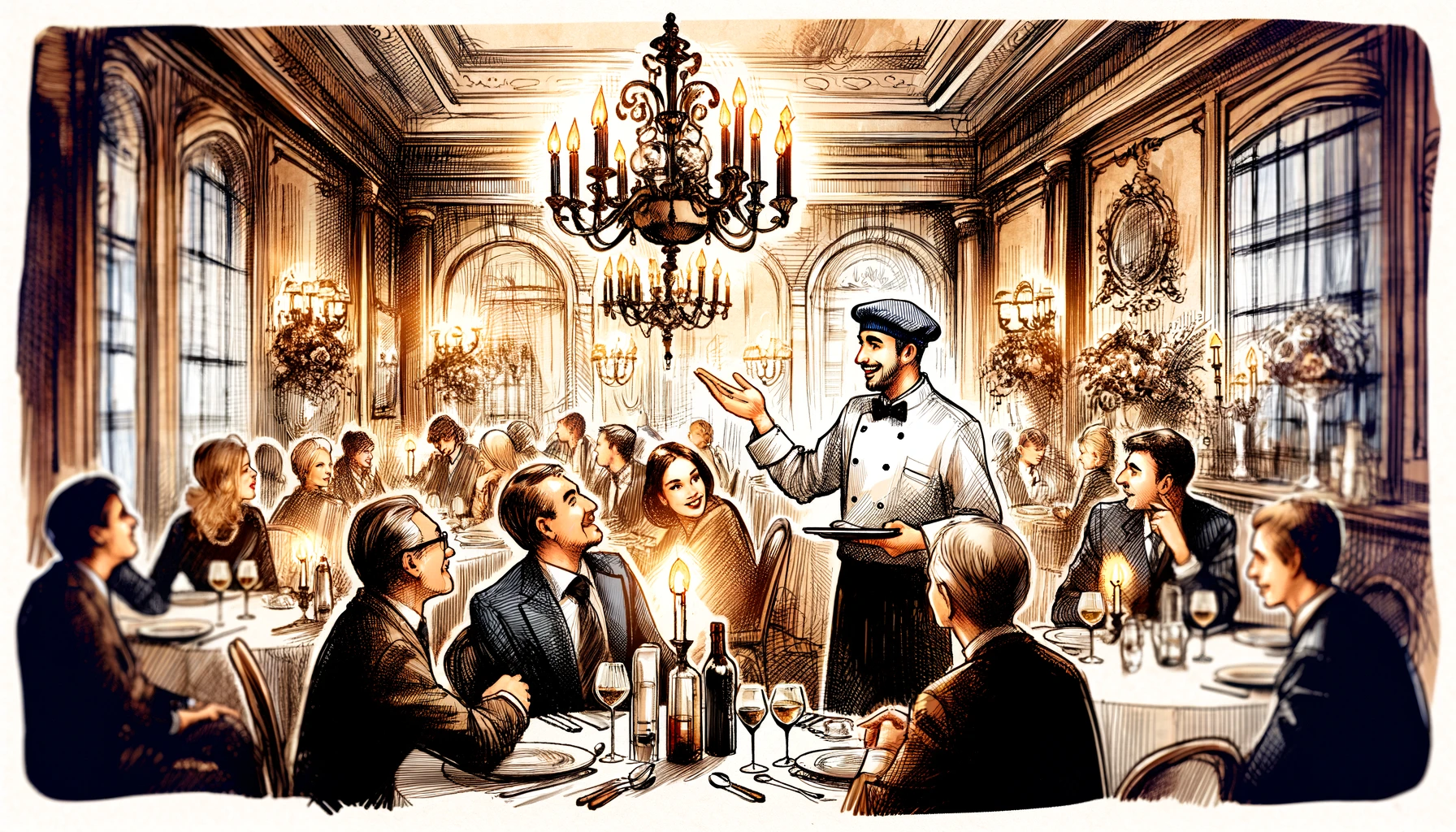To sit at the opulent table of the French, whose dining culture transcends the simple act of eating and evolves into a revered art form is an experience I hope you indulge in many times in your life. This article will lead you down the road to enjoy the art de la table like the French, I’m hoping to provide the info that will lead you to eat like the french anywhere. I’m Chef Tris, your guide through the labyrinth of French dining culture.
Remember, the french take food very seriously.
Each meal is a testament to a rich historical tapestry and a mirror reflecting societal values. In this first instalment of our series, ‘The Art of French Dining: A Journey Through Meals and Moments,’ we delve into the core of French dining culture.
Join me as we uncover how the French not only nourish their bodies but also cultivate relationships and celebrate life’s joys through the ritual of shared meals. Whether it’s a casual family dinner or a grandiose banquet, every French meal is a carefully choreographed ballet of flavours and etiquette, designed to be savoured as much as the food on the plate.
Table of Contents

Historical Roots of French Dining
The fame and prestige of French dining culture transcend fleeting foodie fashions and fads to influence the far reaches of plates around the world. This storied culinary tradition has absorbed the diverse tastes, ingredients and cooking techniques that have traversed France since the Gauls. The French have toiled over stoves for generations to not only perfect recpies but the art of dining itself. French cooking has captured every corner of the world.
The Gauls and the many other kingdoms of france have been famed for their culinary hospitality before we used forks. Yet, the hights of French cuisine we love today, began to evolve significantly during the reign of Louis XIV in the 17th century. Meals transformed into theatrical displays of power and prestige. This era marked the beginning of haute cuisine, as the Sun King’s court emphasized lavish feasts to demonstrate wealth and control. Celebrated chefs like François Pierre de la Varenne and later Marie-Antoine Carême began to codify French cooking techniques and recipes, setting the standards that are still admired today.
The tradition of elaborate dining continued to influence French society through the centuries, culminating in what we now recognize as a global benchmark of culinary excellence. The French Revolution in the late 18th century marked a pivotal point by democratizing fine dining and laying the foundation for the modern restaurant industry, famously epitomized by establishments such as La Grande Taverne de Londres founded by Antoine Beauvilliers. This period also saw the rise of gastronomic literature, with Grimod de La Reynière and later Brillat-Savarin shaping the discourse around taste and dining.
In the 19th and early 20th centuries, figures like Auguste Escoffier modernized French cooking by simplifying and organizing cooking techniques and recipes in a way that could be replicated across the world, solidifying French cuisine’s influence globally. This was also a time when restaurant critics began to emerge as influential voices in the culinary world, with their critiques becoming a significant factor in the success and failure of restaurants.
Despite the pressures of modern life and the allure of convenience, a deep respect for the ritual of dining remains deeply rooted in French culture, transcending time. This respect is upheld by contemporary chefs who continue to honor traditional methods while innovating new ones, and food writers who articulate the evolving landscape of French gastronomy, ensuring that each meal, whether simple or elaborate, carries the weight of centuries of perfection and tradition.
Today’s French dining scene is a tapestry woven with the threads of its rich history, from the Gauls to the gourmet, from rustic bread to refined banquets, each bite a testament to a legacy of culinary reverence.
The Philosophical Approach to Meals
In France, dining transcends mere sustenance—it’s an act of love and respect: respect for the food, the company, and the conversation. Here, meals unfold like a well-told story, paced with intention and savor. They aren’t rushed affairs but leisurely episodes that can stretch luxuriously for hours, especially during weekends or holidays when time seems to stand still just for the pleasure of the table.
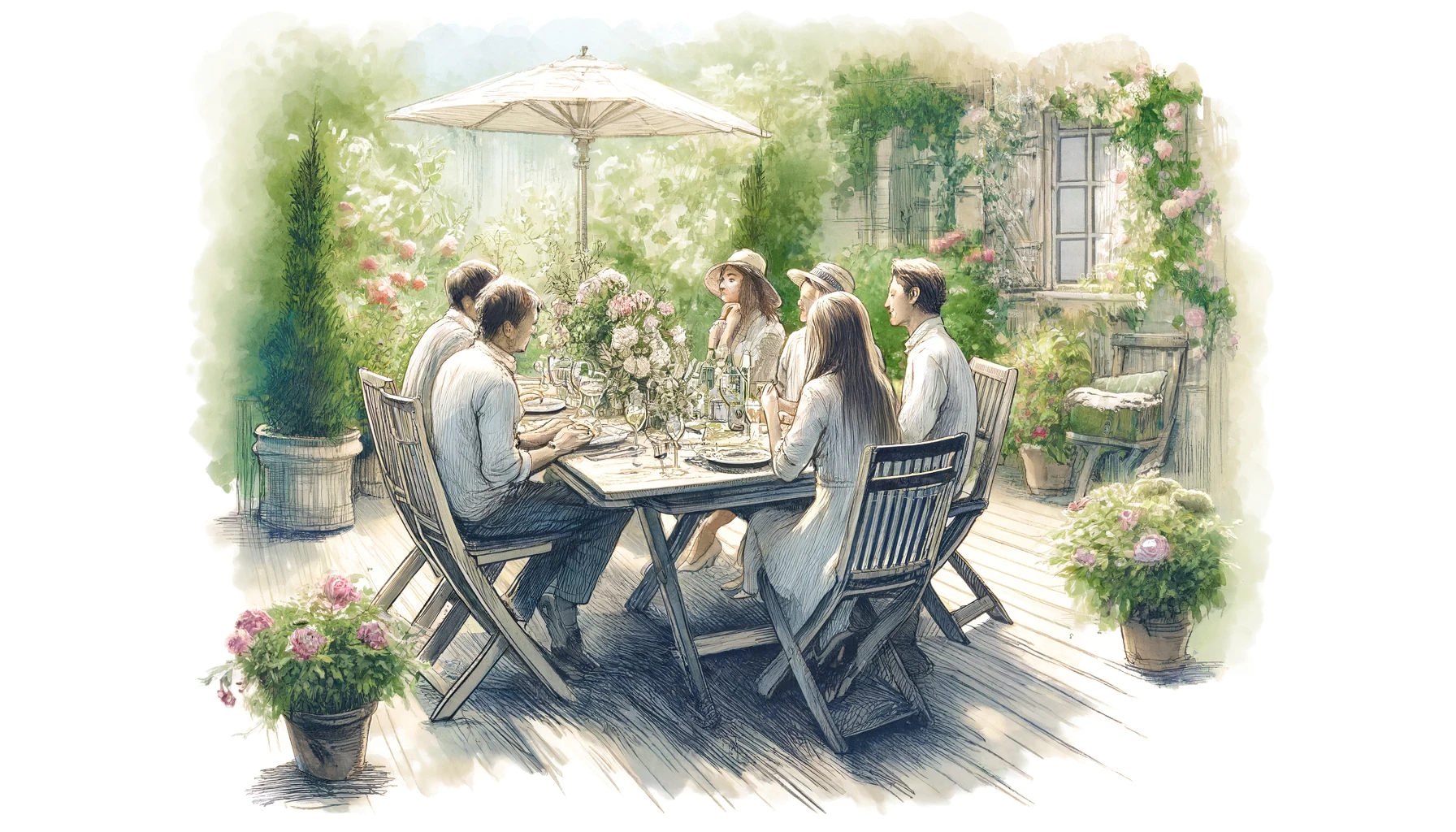
The philosophy is deceptively simple: take your time to relish the pleasure of what’s on your plate and who’s around your table. It’s about more than eating; it’s about enjoying life in its full flavour. This isn’t merely a meal; it’s a celebration of being together, of sharing moments that will become the memories we treasure. Each course is a chapter, each flavor a verse in the grand poem of joie de vivre.
The culinary soul of France’s “joie de vivre” is a jubilant celebration of flavors and aromas, elevating every bite into a spirited feast. This embodies the French’s passionate embrace of life’s gourmet pleasures—a stark contrast to the fast-food culture prevalent in many parts of the world. In France, we don’t just eat; we celebrate the food, the people, and the moment.
Embracing this philosophy means learning to savor each bite, letting the rich tastes and aromas swirl around you, enhancing not just your meal but your entire experience. This approach to eating—celebrating life’s smaller pleasures—is a philosophy I’ve passionately embraced in my own kitchen and at every table I have the pleasure to host.
This mindful appreciation of the moment and the meal is what sets French dining apart, making each gathering around the table an intimate ode to the joy of living. It’s an invitation to slow down, taste, smell, feel, and truly appreciate the abundance life offers through its cuisine. It’s not just a meal; it’s a way of life.
Meal Structure and Timing
A typical French meal might start with an apéritif to stimulate the appetite, followed by multiple courses: an entrée (starter), plat principal (main course), definately fromage (cheese course), and dessert. Not every meal includes all these elements, but Sunday lunch might.
Meals are typically scheduled at precise times, with lunch around 12:30 or 1:00 PM and dinner around 8:00 PM. These are more than just times to eat; they are pivotal social engagements. This meal structure in itself can be linked back to the historical link to those lords and ladies that threw banquettes in their castles all those years ago.
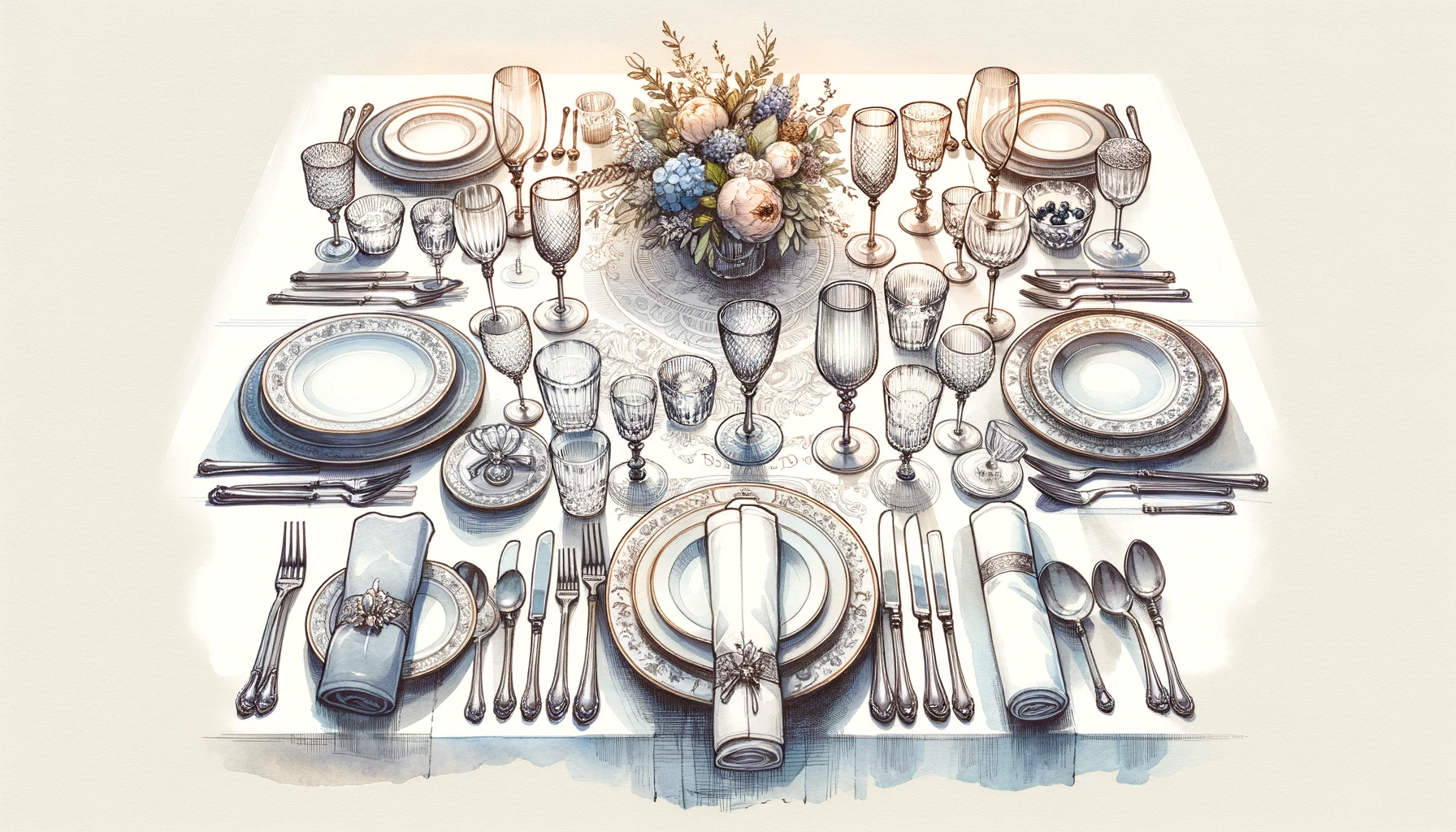
Cultural Nuances and Rituals
French mealtime rituals include lingering over each course, engaging in lively conversation, and appreciating the food’s presentation and flavors. Each region of France might add its own flair to these rituals, from the wine choices in Bordeaux to the seafood-focused meals along the Mediterranean coast. I’ve seen firsthand how these practices vary yet consistently emphasize communal enjoyment and culinary appreciation.
Unique French Dining Rituals to Experience:
- La Pause Déjeuner: In many parts of France, lunch is more than a quick bite; it is a ritualistic pause from the day’s activities. Lasting at least an hour or more, this midday break allows everyone to relax and enjoy a multi-course meal, often featuring a starter, main course, cheese plate, dessert, and coffee—reflecting the French prioritization of leisurely dining even during a workday.
- Le Goûter: This delightful afternoon snack is a cherished ritual, particularly among children. Typically held between 4 and 5 PM, le goûter often consists of a sweet treat such as a pain au chocolat, a slice of brioche, or some madeleines, accompanied by a cup of hot chocolate or juice. It’s a moment of pure pleasure that reinvigorates the spirit and palette before the evening meal.
- L’Aperitif Dinatoire: A more elaborate version of the standard apéritif, this involves a gathering that extends the apéritif into a full meal comprising various small bites like canapés, tapenades, and mini-quiches. L’apéritif dinatoire can serve as a casual dinner and is an excellent way for hosts to offer a variety of tastes without preparing a formal sit-down dinner.
While there will be plenty more tips on how to navigate the french table. Here is an easy one for you to remember.
Don’t Eat Your Bread as an Appetizer: In France, bread is considered an integral part of the meal, not just a starter to be nibbled on before the main courses arrive. It’s customary to place your bread directly on the table, not on your plate, and it should be used to accompany your meal or to mop up sauce. Starting to eat your bread as soon as you sit down can be perceived as impolite or a sign of impatience.
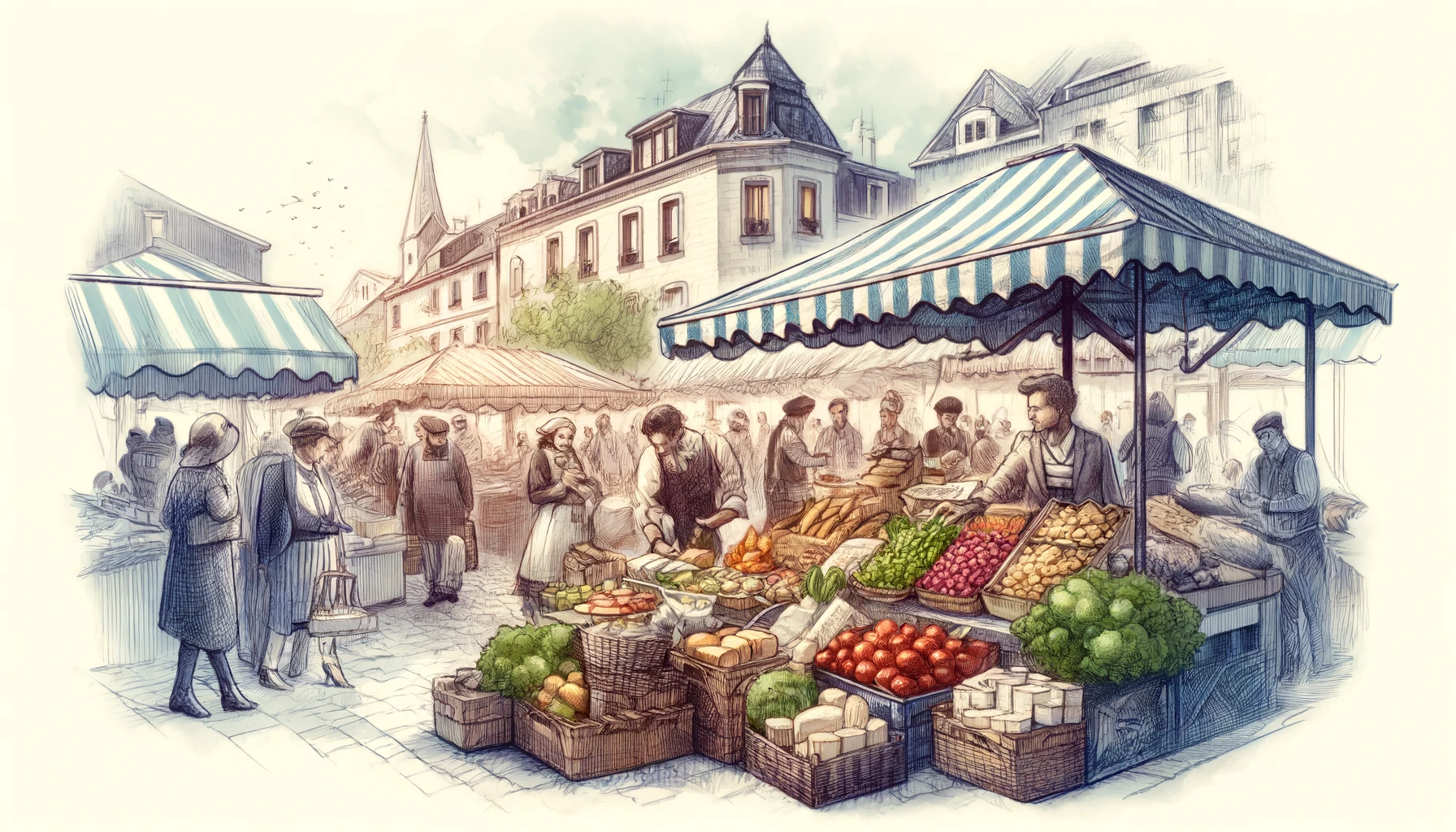
Regional Variations
We often forget the size of france before we consider french dining culture. France’s culinary landscape is as varied as its geography. In Brittany, seafood plays a starring role, while in the southeast, Provençal dishes highlight the bounty of the fields and orchards. In the north we cook with butter where as in the south they prefer the olive oil. These regional differences not only add diversity to the French diet but also help maintain a connection to local traditions and seasonal cycles.
French food will change throughout your visit of the country. While Paris may be a hub of french cusine from all over france it’s real culinary gems can be found in all corners of the hexagon.
Impact on Global Dining
Before you consider your visit to France, think about the french dining culture in you own local town or city.
French dining etiquette, meal structure, and culinary techniques have profoundly influenced global dining standards. Terms like mise en place, amuse-bouche, and sommelier are now part of the international culinary lexicon, thanks to the global spread of French dining practices.
Do you have a restaurant nearby?
Restaurants were invented here in the streets of Paris.
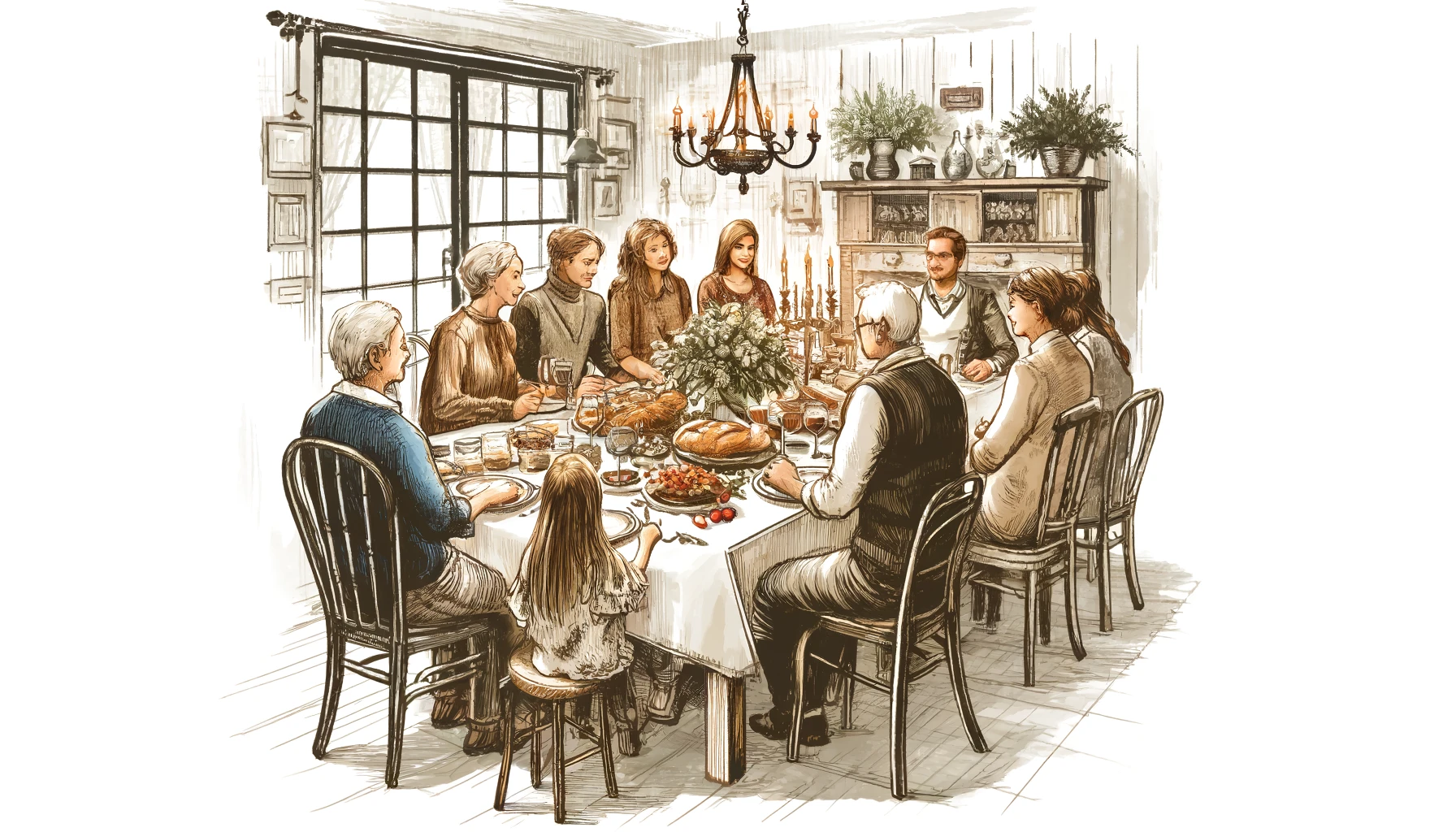
The Essence of French Dining Culture
French dining culture is a testament to the nation’s love affair with food. It’s an integral part of daily life that reinforces the values of family, tradition, and the good life—la belle vie. As we explore these aspects, we discover that dining like the French might be as much about mindset as it is about culinary skills.
Stay tuned as we continue to explore the intricacies of French dining in the next article, where we’ll dive deeper into the etiquette that makes a meal distinctly French. Subscribe now to not miss out on the journey through the enchanting world of French cuisine.
- Book a Food Tour in Paris: Join me!
- How to Eat Like the French: Discover the secrets to dining like a local.
- How to Find Great Restaurants in Paris: Skip the tourist traps and find where the locals eat.
- How to Eat in Paris on a Budget: Enjoying Parisian cuisine doesn’t have to break the bank.
- Self-Guided Food Tours in Paris (and France): explore at your own pace.

